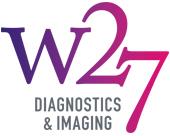Ultrasound guided injections are being used increasingly in sports medicine to assist in the diagnosis and treatment of injuries and conditions affecting the muscles, tendons, joints and ligaments. There are a number of benefits of using ultrasound in this way. It is an imaging technique that uses sound waves rather than radiation to create dynamic pictures of the inside of the body. As well as being very safe, ultrasound produces images in real time which allows the radiologist to see exactly what is happening inside your body during the diagnosis or treatment. This is what makes it a particularly useful way of targeting injections into the joint or soft tissue.
What are ultrasound-guided injections used for?
Ultrasound-guided injections are routinely used in the diagnosis and therapeutic treatment of sporting injuries, such as muscle and ligament tears, labral tears and tendinopathies as well as in the treatment of osteoarthritis.
When they are used diagnostically, such injections to help determine precisely which areas are the source of pain. Alternatively, they may be used to treat pain or promote healing by injecting the affected area with corticosteroids, hyaluronic acid or platelet rich plasma.
What happens during the procedure?
Whichever procedure is being performed, the radiologist uses ultrasound scanning to guide the positioning of the needle. As the needle is inserted into the affected area, following the application of local anaesthetic, he can see real time images on the computer screen in front of him. These enable him to adjust the position of the needle with pinpoint accuracy before the injection is given.
Research study
The Orthopaedic Journal of Sports Medicine published a study in February 2018 exploring the evidence on ultrasound-guided injections in sports medicine. Researchers carried out a comprehensive review of literature and previous studies looking at the accuracy of ultrasound-guided injections.
They pointed out that ultrasound-guided procedures for musculoskeletal abnormalities are becoming increasingly popular and concluded that many of the studies show that ultrasound-guided injections provide greater accuracy than injections performed without it (landmark-guided injections).
In the upper body, for example, the glenohumeral joint, subacromial space, biceps tendon sheath and joints of the hand and wrist were all shown to benefit from the greater precision of ultrasound-guided injections. It was less clear whether such injections are more efficacious in the elbow joint and acromioclavicular joint than those performed without ultrasound.
In the lower part of the body, researchers found that ultrasound-guided injections are more effective than landmark-guided injections in the knee, ankle and foot. There was no conclusive evidence to show that such injections are more effective for hip pain, although landmark-guided injections are performed less commonly in this area.
Greater accuracy and efficacy
Overall, the study shows that using ultrasound helps to ensure greater accuracy and also improves efficacy of the treatment. The researchers called for more research in this area, pointing out that the studies tend to be limited. In conclusion they said:
“Given the improvements in accuracy, ultrasound-guided injections certainly have a role for deeper anatomic structures, for injecting targets that are close to large vascular structures and for patients in whom non-guided injections have failed.”
As an expert in sports injuries and musculoskeletal diagnosis, W27 routinely uses ultrasound-guided injections to determine the cause of pain and provide targeted, effective treatment. Booking a test with us is easy and we offer diagnostic testing in various UK locations. If you are suffering from pain related to a sporting injury, another type of injury or a chronic condition we can diagnose cause of your pain and devise an effective treatment plan. Contact us today for more information.
SPORTS INJURY TREATMENT | MANCHESTER, WIGAN, CHESHIRE + MORE
W27 provides fast, accurate diagnosis and treatment of musculoskeletal symptoms and conditions using the latest state-of-the-art imaging facilities.
For your appointment there is a choice of locations:
The John Charnley Wing, Wrightington Hospital – Hall Lane, Appley Bridge, Wigan, WN6 9EP
HCA The Wilmslow Hospital – 52 Alderley Road, Wilmslow, Cheshire, SK9 1NY
Euxton Hall Hospital – Wigan Road, Euxton, Chorley, PR7 6DY
The Spire Manchester – 170 Barlow Moor Road, Didsbury, Manchester, M20 2AF
The OrthTeam Centre Ohm Building – 168 Barlow Moor Road, Manchester, M20 2AF
MedSerena Upright MRI Centre – 26-28 The Boulevard, Manchester, M20 2EU
Information about our Fees can be found here.
If you have any questions or would like to discuss your options with a specialist, please contact the team to book an initial consultation.











